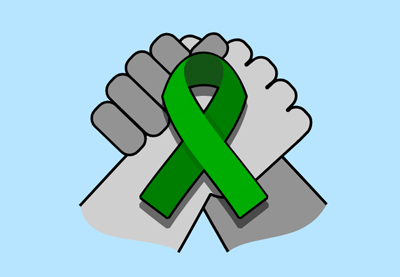World Mental Health Day (10th October) is an international day for mental health. Its goal is to raise awareness and to lower social stigma in an empathetic way.
The World Federation for Mental Health started the event initially in 1992. Richard Hunter, the then Deputy Secretary General, organized the event, aiming to start a long-term effort and positive impact on mental health. In many countries the event lasts for several days or weeks.
At first, the day had no specific theme. Later, each year featured a different theme, for example:
- 2019: Mental Health Promotion and Suicide Prevention
- 2018: Young people and mental health in a changing world
- 2017: Mental health in the workplace
- 2016: Psychological First Aid
- 2015: Dignity in Mental Health
This year, prompted by the current global health emergency, the theme will be Mental Health for All. Greater Investment – Greater Access.
What Is Mental Health?
In short “mental health” refers to emotional, psychological, and social well-being. It influences how we:
- think
- feel
- and act.
Mental health has an effect on daily life, relationships, and physical health.

“… a state of well-being in which the individual realizes his or her own abilities, can cope with the normal stresses of life, can work productively and fruitfully, and is able to make a contribution to his or her community.” – WHO
Good mental health is the cause of productive activities, fulfilling relationships, and the ability to adapt to changes and cope with adversity.
Mental health problems are common. The estimation is that 1 in 6 people in the past week will have experienced a common mental health problem. 10% of people aged 5-16 years have a clinically diagnosable mental problem.
The Spectrum of Mental Health
When talking about this topic we can imagine the following categories ranging from -10 to 10:
| -10 to -1 | mental illness |
| 0 | neutral state |
| 1 to 10 | enjoying life |
Common Symptoms of Mental Illnesses:
- feeling down
- extreme swings in mood
- withdrawing from family, friends, or activities
- low energy
- sleeping problems
- often feeling angry, hostile, or violent
- feeling paranoid,
- hearing voices,
- having hallucinations
- often thinking about death or suicide.
Common Types of Mental Diseases
Anxiety Disorders
These are the most common types of mental illness; where fear or anxiety arises in connection with objects or situations.

- Panic disorder: feeling of extreme fear or paralyzing terror.
- Phobias: fear from objects, places or social situations.
- Obsessive compulsive disorder: constant stressful thoughts, and urges to perform repetitive acts.
- Post-traumatic stress disorder: an illness, which can develop after a traumatic event (eg. sexual assault, warfare, traffic collisions, child abuse, life threats). Disorder symptoms can be disturbing thoughts, feelings, or dreams related to the traumatic event.
Mood Disorders
These illnesses change people’s mood, right along the scale from mania (high) to depression (low).

Major depression: the complete lack of joy and extreme sadness.
Bipolar disorder: changes from highs (mania) to lows (depression) continuously.
Schizophrenia
Schizophrenia is a very complex topic and has several symptoms.

These can include:
- delusions,
- thought disorders,
- hallucinations
- withdrawal,
- lack of motivation,
- flat mood.
Psychological Stress
Stress is a feeling of strain and pressure. It is a form of psychological pain. Small amounts of it can be healthy and improve performance, but excessive amounts of it can lead to negative effects and illnesses. It can increase the risk of strokes, heart attacks, ulcers, and mental illnesses.

External stress comes from the environment, while internal stress comes from personal processes. Distress means negative stress, while eustress means positive stress. The people most prone to stress are careerists, workaholics, aggressive and decided persons and initiators.
During stress, so called “stress hormones” are generated in the body. These are cortisol, adrenaline and noradrenaline. These can cause the body to react with flight or fight response.
Burnout
This topic has become a well-known phenomenon, receiving constant media attention. The term comes from the 1970s when American psychologist Herbert Freudenberger first talked about it. He described it as the consequences of negative stress and high ideals in a given profession.

“Helping” professions like doctors, nurses, counsellors and coaches are more likely to “burn out”, though it can affect anyone, from careerists to employees and homemakers.
Burnout is a state what can be described by reasons of:
- emotional exhaustion,
- mental exhaustion,
- physical exhaustion.
Burnout is different from stress. If the unpleasant feeling is short-lived, it’s probably stress. Burnout can happen multiple times in our lives and nobody is immune to it.
Workplace Burnout
Burnout can happen more often when employees:
- are striving for perfection
- feel incompetent
- feel unappreciated for their work
- feel too much demand from employer
- are in roles that are not a good job fit
- have too long working hours
- have too much responsibility
- have monotonous tasks
- don’t get help from team members
- are always reachable online and cell phone
Addictions
There are a lot of drug and behavioral addictions, for example:
- alcoholism,
- marijuana,
- amphetamine,
- cocaine,
- nicotine,
- opioid,
- food,
- video game,
- gambling,
- and sexual addiction.
According to DSM-5 (Diagnostic and Statistical Manual of Mental Disorders, Fifth Edition, 2013) and the ICD-10 (International Statistical Classification of Diseases and Related Health Problems, 1990, 1994) the only behavioral addiction is gambling addiction.

Mental Illness in the Tech Field
Moving onto something specifically relevant to Tuts+, science assumes mental illness and creativity has some connection. There are studies concluding that creatives can be more predisposed to mental illness. In the web industry there are lots of creative professionals like developers, designers, copywriters and many others.
StackOverflow conducted a survey for developers in 2019 showing the following results:
| mood or emotional disorder | 8.8% |
| anxiety disorder | 8.6% |
| concentration and/or memory disorder | 6.4% |
| autism / an autism spectrum disorder | 2.6% |
“Individuals with many forms of disability and difference are part of the developer community, including those with mental health challenges and physical disabilities. Mental health issues like depression and anxiety are particularly common among our respondents. In the United States, almost 30% of respondents said they deal with a mental health challenge, a higher proportion than other large countries such as the UK, Canada, Germany, or India.” – Stackoverflow, 2019 Survey
Impostor Syndrome
Also known as “fraud syndrome”, this is a mindset in which one doubts one’s accomplishments and has a fear of being exposed as a “fraud”. People experiencing this are convinced, that there will always be someone else that is far better, smarter and more talented. It can be also thought as a cognitive error in thinking, because despite external evidence of their competence, they are convinced that they are frauds, not deserving things they have achieved.
As a result of this thinking, a developer or designer can push oneself beyond the limits to achieve a bigger goal, maybe a much more difficult one than is realistic at that moment.
The symptoms of impostor syndrome can be anxiety, stress, or depression.
“Studies suggest that more than 70% of people experience the impostor syndrome at some point in their career.”
— Wikipedia, Impostor Syndrome
The “Real Developer”
This is a misconception and false belief among developers. Related to the “impostor syndrome” it dictates that a true professional needs to put in extra hours to appear worthy and become better. This can be extreme, like 60-80 hours per week.
About Social Stigma
People often form stereotypes, prejudices and preconceptions about people with mental illness.
Because of this, the quality of life for those under the lens can be more difficult, for example to reach jobs, housing, health care and relationships.
There are two main types of stigma:
- public stigma
- self-stigma
Stigmatizing opinions are not limited to the general public; even professionals from mental health can subscribe to stereotypes. Self stigma can cause problems with self-esteem, and confidence in one’s future.
Stigma is evident in laws, social services, and the justice system as well. Research suggests that strategies are needed to avoid stigma.
There are campaigns against stigma, and their message mentions isolation as well, which can’t be solved with medication. If their soul and heart also gets support, they can also be valuable members of society.
Time to Change is a website dedicated to end discrimination
“Statistically, 1 in 4 of us will experience a mental health problem in any given year. That’s why our work is so important. No one should have to fear being treated differently because of a mental health problem.” – Time to Change
Getting Help
Visiting a psychologist or psychiatrist is not yet considered cool by the public, but the situation can improve in the long run.
There are several websites for finding a professional:
- American Psychological Association, Locator
- The British Psychological Society, Find a psychologist
- UK Council for Psychotherapy, Find a therapist
- American Psychiatric Association, Find a Psychiatrist
- Psychiatry UK, Our Doctors
- Top Doctors UK, Psychiatrists
Differences Between a Psychologist, Psychotherapist and Psychiatrist
A psychologist studies mental processes and human behavior. A psychotherapist helps people for their mental and emotional problems, with a scientifically accepted method. A psychiatrist is a physician who treats mental disorders with medicines.
Wholistic View About Health
This article is about mental health, but it is more helpful to consider all aspects of our life. This means to live a full life it is important to care about physical, mental, emotional and spiritual sides as well.
Tips for Mental Health
Try out these tips in order to improve your mental well-being:
- Follow a diet (avoid sugar, caffeine, alcohol, consume healthy carbs, proteins and fats).
- Practice meditation or yoga.
- Talk to close friends about your experience.
- Watch humor, comedy and parodies.
- Learn progressive relaxation.
- Try out cognitive therapy with a psychologist.
- Strive for “good enough” work instead of perfect.
- Allow yourself enough free time.
- Participate in social events.
- Be active in multiple ways, physically and mentally.
- Spend your time with people you like.
- Laugh every day.
- Sleep enough and regularly.
- Be brave enough to ask for and accept help.
- Remind yourself that no bad can be permanent.
- Talk to someone about your problems.
- Take vacation days.
- Spend time in nature.
- Take a hot shower.
- Work from home.
- Spend time with pets.
- Take a walk.
- Get a hobby.
- Practice mindfulness.
- Try out music therapy or art therapy.
- Explore Stoic and Buddhist philosophy to enhance health and wellbeing.
- Have plants in your room.
- Listen to your body (mental, physical, emotional, spiritual state).
- Write a diary.
- Don’t overwhelm yourself with too much work.
- Don’t make too many programs on a given day.
- Make plans for the next 5 years, and break these down into years and 3 months periods.
- Improve your self-knowledge, self-control, empathy and social skills (these form emotional intelligence based on Goleman’s model).
Support World Mental Health Day!
In this article we reviewed what mental health is, mental illness, and how it can specifically apply to creatives. Please consider helping World Mental Health Day. You can do several things to support the event:
- volunteer
- donate
- start a conversation
- sign up to newsletters
- educate yourself about others’ stories
- join or create an online group
- create an article about the topic
- create art around mental health



